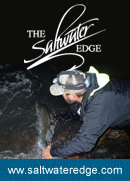If I been MIA a bi, its becouse I am working seven days a week now and late on most days. Its getting to the point where I am just thrilled if I get to see my whole family at least for a minute each day but even that, with kids all over the place is not given. Construction is feast or famine and with new WTC sucking half of our company talent, its been crazy busy. Then again my son is starting college next week so I’ll take any work that comes my way for a long, long time. I thought you should read this..even if you think sky in not falling
Zeno
This post appeared originally at www.reel-tide.com on August 13th
Here is the link to original piece
http://www.reel-time.com/articles/conservation/striped-bass/
Where We are With Striped Bass
ASMFC moves ahead with an addendum to reduce fishing mortality, but getting the cuts we need will not be easy.
This is, I dunno, part 10 or something in my disjointed series on the decline of the striped bass resource and what the Atlantic States Fisheries Management Commission (ASFMC, or the consortium of states that manages striped bass) is going to do about it.
Yes, I write about striped bass a lot, and I do hope readers aren’t rolling their eyes right now. But, I can see which blogs drive traffic. And if I so much as mention striped bass in the title, the number of readers goes through the roof. So I really don’t think so. The point is, striped bass “is” (or crap, maybe I should start saying, “used to be”) really, really important to me… to just about all of us that fish in this region really. I’m not gonna get into why, because I’ve already waxed a few times about how that stupid fish has actually driven my life up to this point. How my business depends upon it, etc. So I’ll spare you that part this time. What I’d like to do this week is to bring readers up to speed on the good, the bad and the ugly on where we are as of last week’s ASMFC meeting.
Yes, the ASMFC Striped Bass Board did meet last Tuesday to discuss (read: add and remove options) to an Addendum to the management plan which is intended to reduce fishing mortality on striped bass. If you haven’t been reading my other blogs, the really short version is that striped bass numbers have declined precipitously over the last eight or so years. Of course if you fish, you already know that. But it’s a fact that we’ve currently exceeded some of the management “targets” that are supposed to require prompt action. Yes, it’s taken a long time to get to the point where we are beginning to see any glimmer of light, but Addendum IV is indeed a “light” of some sort. Even the most precautionary option may not be, and probably isn’t enough (I’ll get to that later) but there will most likely be some action in 2015.
So, last week, after some debate, ASMFC voted out a Draft Addendum IV to Amendment 6 of the Interstate Fishery Management Plan for Atlantic Striped Bass for Public Comment. It includes a bunch of options to reduce harvest along the coast and in the Chesapeake Bay. Some are good, others, not so good.
But before I get to that, let’s talk about Maryland and Virginia because they are really beginning to annoy me. Those two states have been working really hard to water down/chip away at the Addendum, and to some extent they’ve been successful. Through various letters and of course the public record, it’s become very clear that they don’t appear to want any sort of reduction at all, despite all the anecdotal warning signs, the pleas from the public to do something, and, well, the science.
I do understand why. They have a very vocal and influential commercial fishing community. And, not surprisingly, there are a handful of really loud charter boat captains that apparently don’t want to have to stop killing lots of fish. I get it… Watermen are suffering down there. Crabs have crashed, although certainly that’s not the fault of “too many” striped bass, as commercials and even some managers may argue. (Note: there is absolutely no science to back up such a contention, and it should be pretty well known by now that those two species have existed together in abundant numbers since, well, since they both first existed.) But hard lessons learned quite recently with cod in New England should show us pretty clearly what happens when you focus on keeping the commercial fishery fishing on a depleted stock.
In short, neither Maryland nor Virginia appears to give a crap about the hundreds of thousands of anglers in their states who depend on abundant striped bass stocks to be successful, not to mention all the businesses that depend on those anglers. Instead, it’s all about the short term economic gain the Baymen and charter-boats can reap before the stock completely collapses. And I know there are still people who keep saying that the sky isn’t falling. But these are not the people who spend any real amount of time on the water. Listen… The sky is f’n falling.
I could go into more detail here about Maryland and Virginia, but fellow blogger Charlie Witek has already done that quite well here: Maryland Seeks to Slow Striped Bass Recovery. Before moving on,I would also quickly note that Maryland and Virginia’s biggest allies are commissioners from (you guessed it) New Jersey, (surprisingly) Rhode Island, and (to some extent, though I hate to admit it) New York, as well.
Fortunately, despite all of their efforts, Maryland and Virginia were largely unsuccessful in adding separate reference points for the Chesapeake Bay, which would have allowed them to harvest a significant portion of the 2011 year class–the only good year class we’ve seen since 2003. They also tried to base commercial reduction on quota instead of actual harvest, which in many cases would have resulted in no real reduction at all. Fortunately that effort failed as well.
There are only a few options in Addendum IV that we should focus on going forward… So if I’ve still got you, let’s get to them.
“Option A” is of course, status quo. Believe it or not, there are commissioners who have supported this option, and who will argue for it as we move forward, even though it will have less than a one-percent chance of keeping fishing mortality below the target in one or three years. Obviously we do not want Option A!
“Option B” would reduce fishing mortality to a level that is at or below the target within ONE YEAR. This represents a 25-percent reduction from 2013 total harvest. The reduction would of course be shared by both commercial and recreation fishermen.
Option B is the best of the choices available, but it’s a long way from perfect. If you read some of my other stuff you will recall that the what the Technical Committee was initially recommending was a 31 to 34-percent reduction, but it later revisited the commercial discard numbers (those fish they throw back dead,) which ended up being lower than initially projected (Note: the Technical Committee admits that they don’t have a firm grasp on that number.) Really, it’s hard not to think that the change was political, in some way influenced by the wailing and gnashing of teeth. But I don’t really know.
Getting back to the options, “Option C” would reduce fishing to a level that is at or below the target within THREEYEARS. This represents a 17-percent reduction from 2013 total harvest starting in the 2015 fishing year. There are no additional reductions in subsequent years; the 17-percent reduction would be taken all in the first year. Yes, I had to read this a few times also before I understood it. So we’re taking a 17-percent reduction in one year. And theoretically, by doing so it would reduce fishing mortality to at or below the target mortality level by the end of the third year, 2017.
Now, “Option D” would reduce fishing mortality to a level that is at or below the target withinTHREE YEARS also. But instead of doing the reduction in the first year, it would meter it out at seven-percent a year. This is by far the least precautionary option. In fact, a seven-percent reduction over three years is almost as bad as just doing nothing at all.
What I don’t really understand here is how the three year options (C and D) are even compliant! Amendment 6 is pretty clear that if the fishing mortality target is exceeded in two consecutive years and the spawning stock biomass (SBB) falls below the target within either of those years (the fishing mortality target was exceeded in 2011 and 2012, and SSB has been below target since 2006) the Management Board must adjust the striped bass management program to reduce the fishing mortality rate to a level that is at or below the target WITHIN ONE YEAR. WTF man!?
If ASMFC can change its mind any time a management plan becomes inconvenient rather than living up to its promise to the public to take action when a trigger is tripped, then it is telling the public that those management plans aren’t worth the paper that they’re written on. They are saying management plans can be altered at the whim of the management board, regardless of the impact of such change on the health of a public resource. ASMFC has a serious credibility problem if it adopts the three-year phase-in.
But really, who am I kidding. Pretty sure they don’t care.
The point is that Options C and D, which drag things out for three years, are unacceptable. Option B, the 25-percent reduction in one year, is really the best option at this point, and I guess the one we should be advocating for moving forward. But even that isn’t great.
I should note here that all these options, including Option B, have only a 50-percent probability of achieving their goal. In other words, a coin toss. I’m not gonna get into how wrong this is and how given the history of fisheries management we should know better… and how it’s really foolish to not have options that have a greater chance of success because I’ve covered that in other blogs (e.g On Downplaying the Plight of Striped Bass.) And believe me, I voiced that concern at the Striped Bass Advisory Panel meeting. So yeah, I think Option B sucks, but it may be the best we have at this point.
Well, that’s not entirely true. During last week’s ASMFC meeting Massachusetts Commissioner Paul Diodati moved to include an option in the draft addendum for a 30-percent reduction in one year. That makes sense given that the great majority of the public seems to want more significant cuts. But I doubt it will get much support from commissioners. Nonetheless, if that option gets fleshed out and included in the Draft Addendum, we should support it.
Of course there are other more specific options in the document, including bag, size, slot and trophy size limits for the recreational fishery and quota reductions/quota trading for the commercial fishery. But for right now, the goal should be to just get the largest reduction in fishing mortality we can. Because despite what a shrinking number of naysayers are spouting, striped bass are in big trouble.
Having listened to ASMFC discuss the striped bass decline during the last two years, it’s pretty darn apparent that the emphasis is all on money, and whatever economic benefit Commissioners can squeeze out of these fish. But what no one—except for Deodati—seems to be talking about is the loss of income to guys like me. Guys who focus on striped bass charters, guys who depend on abundance. And what about all the surfcasters who are losing access to this fishery very quickly? And all the gear they or any recreational striped bass fishermen buys, the hotels they stay in, the restaurants they eat at? The far-reaching loss of income due to the decline is, I’m sure, extraordinary.
But, of course, it’s the poor commercial fisherman, or the apparently struggling party/charter captains (who can fall back on abundant summer flounder, black seabass and scup stocks) that they listen to, because, well, because they are just louder.
So listen, man. If striped bass are important to you, it’s time to be loud. Really F’n loud! I’m tired of the bullshit. This pro-harvest/F the public mentality has got to go. The Draft Addendum may not be perfect, but we have let ASMFC know that we really want the most risk adverse/precautionary option. Right now that looks like Option B, but before writing, let’s see what they do with the Diodati motion.
The Draft Addendum will be available on the Commission website (www.asmfc.org) underPublic Input the week of August 11th. In the near future there will be public hearings in just about every striped bass state. I’ll be sure to let you know when and where these will happen. If you can’t make the hearing or just find those things as unpleasant as I do (although you can bet your ass I’ll be at the New York one,) written comment will be accepted until the end of September.
That’s all for now. Stand by and I will update you on the public comment situation as it develops.















“… it’s time to be loud!” to AMSFC – Absolutely true, and this should be on every website in our area. Thanks for posting!!
↓Looking for the ASMFC to err on the side of the resource(Striped Bass) is shear folly. That will never happen with the likes of Maryland,Virginia and North Carolina having some input. Do not think the commercial sector is the only one to blame in Maryland either. The MSSA(Maryland Saltwater Sportfishing Association),some 7,000 strong support keeping the status quo. They are counting on tournaments,during the Striped Bass spawning season,to suplement their coffers.
↓Those recreational guys in MDare seeing less fish in those tournaments. How long before they figure it out ? Duh !
↓Where are the equipment guys ? They stand to lose boatloads of profits and development dollars already sunk into “surf” gear, boats, sonar, inshore equipment etc. You can argue that we are not that important as a market ( surf bass fisherman ). Believe that if you choose but if we are only 5-10% of a market and we tank on purchases, some guy/gal in a limo somewhere will have a S-fit. These guys have the money, organizational muscle and motive to help fix the bass issue. Wake up Shimano, St Croix, Lamiglas, Pure Fishing etc. and give this some attention now. As for loud, better late than never.
Thank you Zeno, SJ, Captain. We need a heavy dose of reality and ugly truths to save our favorite fish.
↓I am starting to think the only thing that could ever save our Striper and Tuna etc is pcb toxicity. And that is just depressing as hell.